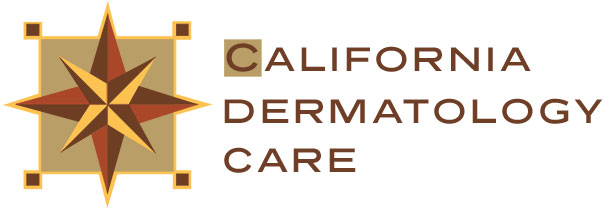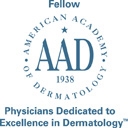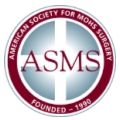 Incredible Marketing
Incredible MarketingCalifornia Dermatology Care offers a wide variety of treatments to suit an individual’s specific concerns. These treatments range from surgical procedures that are utilized to treat severe concerns, such as basal cell carcinoma, and treatments that can help alleviate the presence of cosmetic problems, including fine lines and wrinkles. If you are a resident of the Bay Area and are interested in learning more about the various treatments and procedures we offer, please get in touch with us today at 925-328-0255 or visit our contact page to schedule a consultation.
The Role of Surgery in Dermatology
Dermatologic surgery involves the diagnosis and treatment of both cosmetic and medically necessary conditions. Thanks to various innovations in research, instrumentation and clinical techniques, many dermatologic surgeries are now minimally invasive. This translates to more comfort for patients, the need for only local or regional anesthesia, and significant reductions in downtime and recovery restrictions. New developments also continuously enhance the aesthetic results of many established skin surgery procedures.
All dermatologists are trained in basic dermatologic surgery. Some undergo additional training in advanced procedures. Physicians who are not dermatologists, but may sometimes perform skin surgery, include plastic surgeons, otolaryngologists, ophthalmic or oculoplastic surgeons, and general surgeons.
What Conditions Are Treated With Dermatologic Surgery?
The team at California Dermatology Care offers a full range of surgical and minimally invasive procedures for improving your skin’s function and appearance. Many conditions we diagnose and treat are quite common. In fact, they affect nearly all of us at some point in our lives. Others are rarer and more complex.
Patients come to us for help with:
- Acne scars
- Surgical scars
- Burn scars
- Moles
- Other benign skin growths
- Melanomas
- Non-melanoma skin cancers
- Cysts
- Lipomas
Our providers have specialized training and extensive experience with a broad spectrum of cases. They provide surgical services for diagnosis, treatment and reconstruction to ensure your care is complete and customized for you.
What Are Some Common Surgical Dermatology Procedures?
Laser Surgery for Scar Revision
Laser surgery is a procedure that can significantly improve the appearance of scars. The procedure involves introducing laser energy to the desired area for treatment to either remove the outer layers of the skin’s surface or stimulate the production of new skin cells to replace the damaged ones. Laser surgery is often used to treat injury scars, burn marks and acne scars. The treatment is also used to treat more serious concerns, including keloid scars and contractures.
Curettage and Electrodessication
Curettage and electrodesiccation is a surgical dermatology procedure that utilizes a curette, which is a small scoop-shaped instrument. This device is used to scrape off noncancerous skin growths and more serious concerns, such as basal cell carcinoma. When the unwanted skin growth is removed, electrodesiccation is performed to widen and cauterize the treatment site to minimize bleeding. Curettage and electrodesiccation are not recommended for cancers in the advanced stages or when lesions are recurrent.
Excision
Excision is a surgical procedure that is recommended for patients with melanoma or non-melanoma skin cancers. Patients with high-risk basal or squamous cell carcinomas can undergo the procedure, but there is a risk for cancer recurring after surgery. Excision involves cutting the tumor and surrounding healthy skin tissues out and then stitching the remaining skin together. This option will be discussed during an initial consultation and determined if it is a suitable treatment route.
Flap and Graft Repairs
Flap and graft repairs are commonly used for large wounds formed after skin cancer removal. A flap and graft are taken from donor sites of the body and stitched to the recipient site to improve the appearance of where the cancer was removed. Flaps and grafts differ. A skin flap has its own blood supply, while a skin graft does not. However, blood vessels gradually grow into a skin graft, supplying it with nutrients. Which repair method is used depends on the appearance and thickness of the wounded area.
Subcision
Subcision is another common surgical dermatology procedure that is often used to treat cutaneous scars, scars that commonly form after trauma, surgery and infection. A hypodermic needle is inserted through a puncture on the skin’s surface during this minor surgical procedure. The needle then cuts through fibrotic strands that are preventing the scar from healing properly. The procedure prompts the body to produce more collagen, improving the scar’s appearance.
What Advanced Surgical Dermatology Procedures Are Available?
Mohs Surgery
Mohs surgery is the most effective surgical procedure for basal cell carcinomas and squamous cell carcinomas. The procedure is performed in steps and spares healthy skin tissues, allowing for the development of the smallest scar possible. There are essentially six steps for Mohs surgery: examination, top layer removal, lab analysis, microscopic examination, second layer removal and wound repair.
During the initial step, Dr. Ting examines the treatment site and injects local anesthesia. The top layer of the cancer is then removed using a scalpel and is sent for lab analysis to determine if an additional layer removal is needed. Some skin cancers may have roots that aren’t visible from the surface, meaning additional tissue removal is required. Depending on the size and location of the former cancer cells, the wound may be left to heal naturally or stitched shut.
Subnovii Plasma Pen
The Subnovii Plasma Pen is a unique treatment that triggers the body’s healing response to improve the appearance of cosmetic concerns. When the Subnovii Plasma Pen device is applied to the skin, it stimulates the plasma, or fine layer of ionized gas present on the surface of your skin, to penetrate the surface layer and increase the production of several proteins. These proteins are collagen, elastin and hyaluronic acid. The treatment can be utilized to treat a wide range of concerns, including stretch marks and acne scarring.
Extensive Surgical Dermatology Experience at California Dermatology Care
Dr. William Ting is a skilled dermatologic and reconstructive surgeon and is a fellow of the American Society of Dermatologic Surgery. He has tremendous experience in surgical and procedural dermatology. He has completed a surgically-oriented dermatology residency at the University of Iowa, where he operated on countless Iowan farmers and families with skin cancers on the face and neck as well as other parts of the body. At the end of his dermatology residency, he had a substantially greater amount of surgical experience than the typical dermatology graduate in the U.S.
He acquired significant Mohs micrographic surgery experience while working with Drs. Duane Whitaker, Christopher Arpey and Daniel Davis while at the University of Iowa. Dr. Ting has performed more than fifteen hundred Mohs micrographic surgery and countless reconstructive surgeries for non-melanoma skin cancer since 2000. Dr. Ting is a member of the American Society for Mohs Surgery, as are 48 percent of Mohs surgeons in California.
Dr. Ting is at the forefront of dermatologic surgery by being the first physician in the East Bay and the first dermatologic surgeon in Northern California to pioneer the revolutionary FDA-approved CelluLaze surgical laser therapy for cellulite of thighs. Dr. Ting is also proud to be the first dermatologist in the San Francisco Bay Area to introduce Cutera GenesisPlus Laser for post-surgical laser scar revision.
Factoids About Skin Cancer
Skin cancers can be minimized via strict daily sun protection, regular visits to a board-certified dermatologist and modalities to reverse sun damage (see Preventive Dermatology page)
- 1 in 3 Caucasian-Americans will have a nonmelanoma skin cancer (NMSC) in his or her lifetime.
- Basal cell carcinoma (BCC) derives from a malignant proliferation of the bottom layer of the epidermis, known as the basal layer. It is the most common skin cancer, period, for Caucasian-Americans.
- Squamous cell carcinoma (SCC) arises from the malignant proliferation of the top layers of the epidermis. It is the second most common NMSC, tends to be more aggressive and grows more quickly than BCC. More than 10 percent of SCC may metastasize if left untreated for several months.
- Malignant melanoma is triggered by the malignant transformation of pigment-producing cells of the epidermis known as melanocytes.
- Risk of melanoma is 1 in 33 Americans in 2007/8.
- Invasive melanoma is the 6th most common cancer in men and women.
- Melanoma is the second most common cancer for women aged 20-29 years.
- 5-year survival of melanoma-in-situ, if caught early, is better than 95%.
- Every first-degree relative of someone with a history of melanoma must get a head-to-toe skin check once a year as the risk of melanoma is significantly higher than the general population.
Schedule a Consultation at California Dermatology Care
If you have recently been diagnosed with skin cancer or believe yourself to have skin cancer, please schedule a consultation with Dr. William Ting of California Dermatology Care. He can assess your concerns and help determine which surgical procedure will best suit your condition. Or, if you have a cosmetic concern, California Dermatology Care may have the treatment you need. Residents of the Bay Area are encouraged to contact us at 925-328-0255 or visit our contact page to learn more about the various treatments and procedures available.
Patient education matters to us. The information on this page has been reviewed by the board-certified dermatologists of California Dermatology Care. If you have any questions about our procedures or treatments, please get in touch with us today.










